Cruithne: Legendary King, His Seven Sons And The First Celtic Tribe That Inhabited British Isles
A. Sutherland - AncientPages.com - An ancient myth says that at the beginning of time, there was a legendary king of the Picts, Cruithne (from the Gaelic word: 'An Cruithain' (Pict) - naturally, 'painted people,' was a son of Cing (in Gaelic: 'strong or brave').
Reconstructed crannog on Loch Tay. Image credit: Dave Morris - CC BY 2.0
Considered to be the father of the Picts, Cruithne, the first king of the Picts, reigned for a hundred years. He had seven sons, and their names were: Fib, Fidach, Foclaid (or Fotla), Fortrenn, Caitt (or Cat), Ce, and Circenn.
If Cruithne really existed, he would have lived about 442 or 476 BC. Historically speaking, the myth seems accurate. These seven provinces did exist within Pictish territories.
In his book, 'The Problem Of The Picts' F.T. Wainwright mentions an ancient account of Scotland called 'De Situ Albanie,' the first of seven Scottish documents ('Pictish Chronicles ') recorded in the so-called 'Poppleton Manuscript,' probably written between 1202 and 1214, in the reign of the William the Lion, by a French-speaking resident of Scotland (north of the Forth).
'Cruithne' also refers to the whole tribe of people – one of the earliest Celtic tribes known to have inhabited Ireland and Britain, who appeared in the British Isles between approximately 800 and 500 BC.
These people (of early medieval Ireland) probably migrated from the mainland; they may have been descendants of prehistoric – native tribes - that inhabited the British Isles since the Stone Age.
Their heartland was in Ulster and included parts of the present-day counties of Antrim, Down, and Londonderry, and they are also said to have lived in parts of Connacht and Leinster. Their name is the Irish equivalent of Priteni, an ancient name for the Celtic Britons, and was sometimes used to refer to the Picts.
However, there is still a debate among scholars as to the relationship of the Cruithne (Cruthin) with the Britons and Picts. Or were they perhaps Partholonians, mythical early invaders of Ireland?
The history of the earliest tribes in the British Isles remains obscure.
The name 'Cruithne' could also be related to the early Irish word 'Cruth,' which means 'shape' or 'design.' Many historians have said that the Picts were the 'painted people,' it has been suggested that they had a habit of tattooing themselves; they may have decorated and tattooed their faces and bodies with dyes.
According to the Collins Encyclopedia of Scotland, "the Picts did not 'arrive' - in a sense they had always been there, for they were the descendants of the first people to inhabit what eventually became Scotland".
The Picts are often described as the descendants of the indigenous Iron Age people of northern Scotland and it is thought that they came originally from Scandinavia as a cohesive group. Since they left no written record of their history, what is known of them comes from later Roman and Scottish writers and from images the Picts themselves carved on stones..."
The Irish called the Picts the 'Cruithne,' and the Romans called them 'Picts,' a general term covering many separate tribes.
"These people had mysterious language and symbols. The Picts’ language is a mystery and the meaning of the symbols stones they left remains an enigma. The language the Picts spoke has been lost, but more than 250 stones with Pictish symbols survived and these can give us a better understanding of the Picts.
Some Pictish stones have written inscriptions. Pictish letters - called 'ogam' - had no curves, so they were well suited for carving on stone..." 1
Written by – A. Sutherland AncientPages.com Staff Writer
Updated on December 11, 2023
Copyright © AncientPages.com All rights reserved. This material may not be published, broadcast, rewritten or redistributed in whole or part without the express written permission of AncientPages.com
Expand for referencesReferences:
Foster, Sally M. Picts, Gaels and Scots
Sir Daniel Wilson, The Archaeology and Prehistoric Annals of Scotland
More From Ancient Pages
-
 Gungnir: Odin’s Magical Weapon That Provoked Or Reduced Conflicts In Norse Mythology
Featured Stories | May 12, 2020
Gungnir: Odin’s Magical Weapon That Provoked Or Reduced Conflicts In Norse Mythology
Featured Stories | May 12, 2020 -
 Secrets Of The Cathars – Mysterious Manuscript Of Jesus And His Pre-Flood Language
Featured Stories | Jan 18, 2019
Secrets Of The Cathars – Mysterious Manuscript Of Jesus And His Pre-Flood Language
Featured Stories | Jan 18, 2019 -
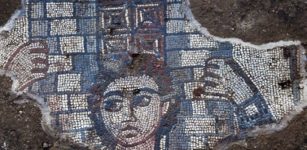 Mosaics Discovered In Ancient Galilean Jewish Village
Archaeology | Jul 10, 2018
Mosaics Discovered In Ancient Galilean Jewish Village
Archaeology | Jul 10, 2018 -
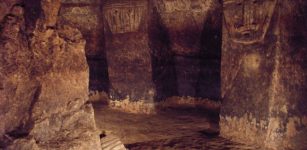 Huge Subterranean Pre-Columbian Shaft Tombs In Tierradentro, Colombia
Featured Stories | Apr 28, 2021
Huge Subterranean Pre-Columbian Shaft Tombs In Tierradentro, Colombia
Featured Stories | Apr 28, 2021 -
 Orichalcum: Mysterious Metal Linked To Legendary Atlantis Discovered In Shipwreck
Archaeology | Jan 8, 2015
Orichalcum: Mysterious Metal Linked To Legendary Atlantis Discovered In Shipwreck
Archaeology | Jan 8, 2015 -
 Ancient Religious Ceremony May Shed Light On The Mysterious Qumran Site
Archaeology | Sep 6, 2021
Ancient Religious Ceremony May Shed Light On The Mysterious Qumran Site
Archaeology | Sep 6, 2021 -
 Māori Connections To Antarctica May Go As Far Back As 7th Century
Archaeology | Jun 9, 2021
Māori Connections To Antarctica May Go As Far Back As 7th Century
Archaeology | Jun 9, 2021 -
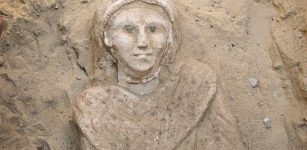 Curious Golden Figurine Of Female Dwarf Is A Puzzle
Archaeology | Feb 16, 2014
Curious Golden Figurine Of Female Dwarf Is A Puzzle
Archaeology | Feb 16, 2014 -
 Forgotten Ancient Empire That Extended Far Beyond America To Iceland And Its Mysterious Inscriptions
Ancient Mysteries | May 6, 2021
Forgotten Ancient Empire That Extended Far Beyond America To Iceland And Its Mysterious Inscriptions
Ancient Mysteries | May 6, 2021 -
 Geri And Freki: Two Wolves ‘Greedy’ And ‘Ravenous’ Were Loyal Companions Of Odin In Norse Beliefs
Featured Stories | Feb 8, 2019
Geri And Freki: Two Wolves ‘Greedy’ And ‘Ravenous’ Were Loyal Companions Of Odin In Norse Beliefs
Featured Stories | Feb 8, 2019 -
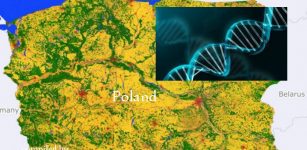 Bronze Age DNA Shows Direct Genetic Link To Current Inhabitants Of Southern Poland
Archaeology | May 4, 2020
Bronze Age DNA Shows Direct Genetic Link To Current Inhabitants Of Southern Poland
Archaeology | May 4, 2020 -
 Fate Of The Woman Whose Mysterious Doppelgänger Ruined Her Life
Featured Stories | Mar 6, 2023
Fate Of The Woman Whose Mysterious Doppelgänger Ruined Her Life
Featured Stories | Mar 6, 2023 -
 Norwegian Vikings Were Much More Violent Than Their Danish Counterparts, New Study Reveals
Vikings | Aug 29, 2024
Norwegian Vikings Were Much More Violent Than Their Danish Counterparts, New Study Reveals
Vikings | Aug 29, 2024 -
 What Can New Method Radiocarbon 3.0 Reveal About The Interaction Between Homo Sapiens And Neanderthals?
Archaeology | Mar 29, 2023
What Can New Method Radiocarbon 3.0 Reveal About The Interaction Between Homo Sapiens And Neanderthals?
Archaeology | Mar 29, 2023 -
 Numa Pompilius – Remarkable Legendary Second King Of Ancient Rome Who Succeeded Romulus – Did He Ever Exist?
Featured Stories | Mar 2, 2018
Numa Pompilius – Remarkable Legendary Second King Of Ancient Rome Who Succeeded Romulus – Did He Ever Exist?
Featured Stories | Mar 2, 2018 -
 2.37-Meter Sword And Unusual Shield Mirror Unearthed In Ancient Mound In Japan
Archaeology | Jan 27, 2023
2.37-Meter Sword And Unusual Shield Mirror Unearthed In Ancient Mound In Japan
Archaeology | Jan 27, 2023 -
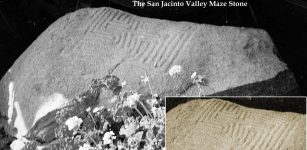 Baffling Prehistoric Maze Stones In Hemet And San Jacinta Valley, California
Ancient Symbols | Jun 24, 2016
Baffling Prehistoric Maze Stones In Hemet And San Jacinta Valley, California
Ancient Symbols | Jun 24, 2016 -
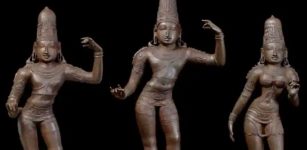 Stolen Antique Tamil Nadu Statues Have Been Returned By Britain To India
Artifacts | Sep 23, 2020
Stolen Antique Tamil Nadu Statues Have Been Returned By Britain To India
Artifacts | Sep 23, 2020 -
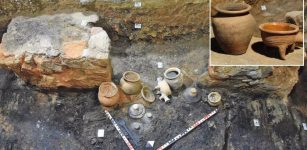 Uniquely Well-Preserved Medieval Kitchen Unearthed North of Moravia
Archaeology | Aug 11, 2022
Uniquely Well-Preserved Medieval Kitchen Unearthed North of Moravia
Archaeology | Aug 11, 2022 -
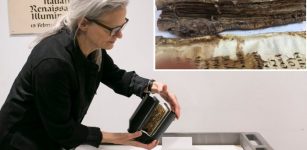 Ancient Biblical Manuscript M.910 We Are Afraid To Open May Contain A Surprise
Archaeology | Feb 19, 2018
Ancient Biblical Manuscript M.910 We Are Afraid To Open May Contain A Surprise
Archaeology | Feb 19, 2018



